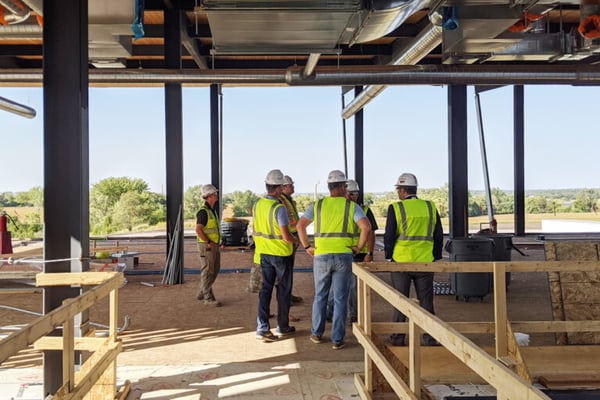Architecture can be a slow process—and for good reason. Consulting relevant stakeholders, finding the right solutions, and providing quality assurance reviews takes time. Depending on the scope of your project, it can take months or even years before construction begins.
If you are operating on a tight schedule, you may be wondering if you can expedite the design of your building. At Neumann Monson, we have worked on projects that fast-tracked design to start construction sooner than normally possible, so we know it can be done.
While it is possible to expedite the design process, it comes with its drawbacks, which is why we are educating anyone who is considering taking this route.
Continue reading to learn what you can expect from an expedited schedule, including:
- Your level of responsibility
- Quality assurance issues you may encounter
- Potential legal setbacks
By the end of this article, you will understand how your architect can fast-track the design process and what setbacks you might face, helping you weigh the pros and cons of taking this route.
3 Drawbacks of Expediting Design
1. Increased Owner Responsibility
On any project, your architect will set a general timeline for each phase of the design. If you are trying to expedite the design process, your architect will create a strict schedule with clear deadlines for each milestone. All necessary parties—including consultants, contractors, and the building owner—need to be prepared to follow this schedule.
To stay on track, you should be prepared to make quick decisions. As the building owner, you will need to consult all relevant parties and approve design decisions in the schedule’s allotted time. This increases your responsibility and, potentially, the level of stress you will experience. If you are representing multiple stakeholders, a faster schedule reduces your ability to build consensus with your group and establish buy-in.
In these situations, many building owners will choose to hire a Construction Manager (CM). Whether a CM-at-risk or a CM-Agent project delivery method, the CM can act on behalf of the owner and make design decisions, reducing the number of decisions an owner will have to make.
If you are considering this method, keep in mind that you will be turning over a significant amount of control over to the CM.

Some building owners may choose to work with a Construction Manager when operating on a fast schedule.
2. Potential Quality Control Issues
Expediting the design process also increases risk. On any project, your architect will review all drawings and specifications for quality assurance purposes. Although this process still occurs on projects with a faster timeline, there may be less time to coordinate communication with consultants and contractors.
To expedite the process, the architect can also bid out the project in phases. For example, the architect may request bids for foundations while specifications for other portions of the building are being developed. This technique speeds up the project by allowing the design and construction process to overlap.
While effective, this method also increases risk. By bidding out the project in separate phases, the architect cannot modify the design as it progresses. Once foundations are in place, you cannot adjust without an added cost. Additionally, bidding in phases also means portions of the project are contracted before you receive bids for the whole. Controls need to be in place so that later phases do not come in over budget.
3. Legal Setbacks
Expediting the design process may not always be possible due to legal considerations. Some municipalities may not allow you to fast-track certain scopes of work, like foundational work prior to architectural packages. Your architect, however, should be able to identify those expectations.
At the same time, some states require public projects like K-12 schools, public infrastructure, or university buildings to use a design-bid-build project delivery method. With this method, the architect must complete all construction documents before placing the project out for bid.
This process will be slower than a delivery method that allows phased bidding, like CM-at-risk. As such, the project may not move as fast as you anticipate.
Should You Expedite the Design Process?
Although it is possible to speed up the design process, it is not ideal. Taking this route will increase your level of responsibility, the level of risk during construction, and the amount of stress that you endure. Therefore, we always recommend a schedule that allows for a thorough and engaging design process—especially when clients are taking on their first project.
If you are still concerned about your project’s timeline, fear not. We understand the importance of keeping your project on track. Read our guide to project timelines to learn what factors will influence the length of your project.
